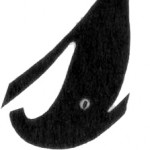seams and hemming
-
15 years ago LINK
corlee @corlee
i have a couple of questions. i’m still rather new at garment sewing so…
1) many times in tutorials and these patterns i see instructions for pressing seams open. but when i look at the inside of my clothes, which have been serged, they are sewn together. why is that? could one just zigzag the seams together the way a serger stitches the seams together? if i’m being honest, it’s partly because pressing isn’t my favorite activity… and do people always press everything?
2) how come one can’t hem the bottom of pieces from the get go? it would seem to me that it would be easiest to hem the items first while the pieces are flat. i understand maybe not hemming till the end if you want to do a custom fitting but if not then why not just hem the items first? granted, i still hem everything last.
15 years ago LINKHi Corlee,
1. Traditionally, seams are pressed open and finished separately. This reduces bulk in the seams and allows for alterations. What you’re seeing in your ready-made clothing is a merrowed (or serged) seam, which is a specialized type of sewing machine that finishes the seam allowance as it stitches the seam. If you have a serger, you can sew in this same method, although occasionally you need to finish the seams separately. In our patterns we always try to tell you in advance if this is the case, but do keep it in mind as you sew. Also keep in mind that a serged seam can’t easily be ripped out or changed, so be careful as you sew, and if you need to check the fit do so before serging.
2. In some instances you can indeed hem garments early on in the process. Many people like to check the length for a custom fit, but if you know you’re happy with the length, feel free to hem earlier if it works better for you. With some of our patterns, things don’t all “come together” until the very end, so we wait until then to hem. But otherwise it’s just a matter of preference, really.
I hope that helps!
15 years ago LINKcorlee @corlee
thanks, liesl! completely helps. i don’t have a serger and i don’t hem things before finished, but as i was sewing, i was curious about these things. thanks for the explanations.
15 years ago LINK Sarvi
@Sarvi
Sarvi
@Sarvi
Any folks care to share comments/photos of your favorite methods for finishing seams? I love the look of French seams and tried them once, and to my surprise they came out pretty well. I’m currently using pinking shears but don’t like the look as much. I also tried sewing a zigzag over the edge but my sewing machine sort of sucked the edge of the fabric down into the hole where the bobbin thread comes up. Some of the photos from the flickr group make the garments look almost as pretty on the inside, which I would love to be able to reproduce some day.
15 years ago LINKmylittlegirlscloset @mylittlegirlscloset
Sarvi to keep the edges from getting sucked in you can put tissue paper under the fabric. It rips off really easily when you’re done.
I use french seams some of the time but most of the time I zigzag close to the seam and then trim with pinking shears.
15 years ago LINKckcsbella @ckcsbella
My current machine has an option for overcasting the seams (kind like a serger finish, only without the cutting a serger does). I love it, and it’s very clean. Looking back at garments I sewed with my last machine, I did a variety of finishes. I zigzaged seams (sometimes I would fold them over, and then zig-zag.) I did seams with what I believe is called a Hong Kong finish, which is folding them over and sewing with a straight stitch. I also used bias tape (most often on arm holes.) There are lots of books out there that can help if you are looking for seam finishing. One of my favourites is the Reed Books The Complete Book of Sewing. It’s got photographs of absolutely everything! I think it may be out of print, but try your library. HTH!
15 years ago LINKlattemama @lattemama
I follow a girl from Australia who did a “seam-along” where she tried out different methods of finishing seams.
http://hoppobumpo.blogspot.com/search/label/Seams
She also did a “hem-along”: http://hoppobumpo.blogspot.com/search/label/Hems
I found it very informative.
I usually serge my seam allowances together after I sew the seam. Maybe not the ideal way, but it works for me.
15 years ago LINKjanimal @janimal
I don’t have a serger. BUT – I do have an overlock foot for my machine, and with the right stitch, it has a guide to roll the edge of the fabric under the zig-zag stitch to kind of look like a serged edge. I use that foot to finish the seams in the garments I have made. It’s worked wonderfully for the side seams of the Popover Dress.
I recently purchased (from Amazon.com) a foot for my machine to use an overlock stitch that also cuts fabric. I haven’t tried it yet, but the idea is that it will finish and cut the edge of the fabric much like a serger would.
If you have a sewing machine with an overlock stitch (I use a zig-zag with a line next to it) then the right foot can help you finish the seams without a serger! Try it!
15 years ago LINK Sarvi
@Sarvi
Sarvi
@Sarvi
Wow, thanks for all the terrific info, everyone! I checked my local library for Reed Books item but didn’t see it; I’ll check to see if I can get it on Inter-Library Loan. I went to bed late last night looking at everything on the Hoppo Bumpo site — that’s perfect for me, since I tend to do better with photos than with written descriptions (and am realizing it’s quite hard to take clear photos of some things when it comes to sewing). I just kind of assumed that if I didn’t have a serger, I was stuck with a simple zig-zag, but I may indeed have a foot for my machine that will allow me to use one of the other settings. I’ll try the tissue paper trick today if I still have a problem with the fabric falling through.
You guys are amazing, thanks so much.
15 years ago LINKcorlee @corlee
janimal, i think i have the same stitch on my machine. do you finish the seams together or do you press the seams open and then stitch over each edge?
you all are great. thanks so much for all of this information!
15 years ago LINKjanimal @janimal
Corlee,
For the Popover Dress I finished the seams separately. Then on one I stitche them together. I noticed no difference at all in the wearing of the dresses. So personaly choice I guess? Either way the seam looked nice and finished.
I follow a simple play shorts pattern for my daughter and actually use the overlock around each pattern piece (just two pieces) before construction.
15 years ago LINKcorlee @corlee
cool. thanks for the tip and insight!
and in general, thanks to oliver + s for creating these forums. they are so helpful!
15 years ago LINK Sarvi
@Sarvi
Sarvi
@Sarvi
janimal, just wanted to follow up to tell you that I finally read the manual and you were absolutely right — my machine does an ‘overcast’ stitch and in fact the presser foot I need came with the machine! I feel a little foolish now for the grueling way I’ve been doing seams, but I guess it’s always good to have a little experience doing things from scratch, if only so you can confidently say that you prefer another method. I did mutter, ‘I can’t believe it took me this long to read the [blankety-blank] manual’ in a tone of disbelief, which drew a few looks from my husband who suggested that to me about five years ago (not exaggerating). He estimates that I’ll read my camera manual in 2015.
15 years ago LINK Nicole
@motherof5
Nicole
@motherof5
Oh no Sarvi, usually its the chaps who do not read the manual, they are like maps !
I’m devastated !
15 years ago LINK Sarvi
@Sarvi
Sarvi
@Sarvi
Anybody have thoughts on finishing seams made from thicker material (in this case, wool)? It doesn’t seem to want to fray at all, but I’m taking so much care with this particular item that I don’t want to skimp on any step. I would bind the seams in bias tape if not for the fact that the lining (which I’d want the bias tape to match) is a very papery silk.
You must be logged in to reply to this topic.
copyright
Unless otherwise credited, all work on this blog is © Liesl + Co., Inc, 2008-2026. You are welcome to link to this blog, but please ask permission before using any text or images.